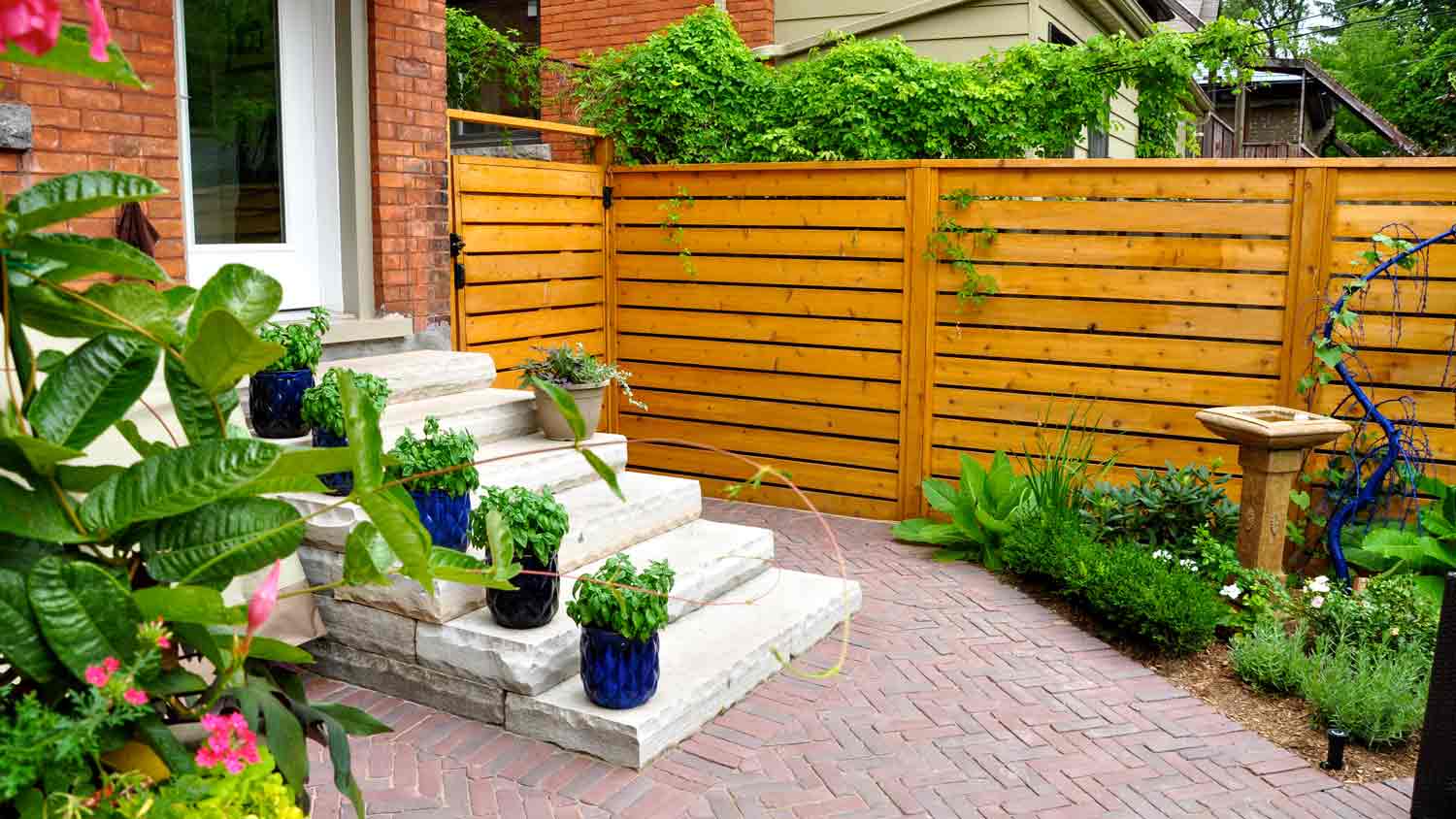How much a wood fence costs depends on the material, add-ons, and more. Read this guide to learn how each cost factor impacts the price of a wood fence.
Can You Install a Fence in the Winter?
Installing a residential fence during the colder months benefits your budget and your lifestyle


Opting to install a fence during the winter can help you save money, avoid waiting lists, and prevent damage to your landscaping.
If you regularly experience freezing temperatures, your fence installer can recommend the best time to schedule your project.
Pros have the experience and tools to properly install a fence in winter temperatures, complete the job faster than a DIY project, and may offer warranties.
Short answer? Yes! If you’re considering installing a new fence, you might want to wait until cooler weather hits to start your project. There are several benefits to installing a fence in winter, including saving money, preserving your landscaping, and ensuring that your yard looks its best come spring. Here are some tips to keep in mind when installing a new fence during the winter months.
Benefits of Installing a New Fence in the Winter
Many homeowners think of installing a new fence as a spring or summer project, but there's a compelling case to do so during winter. While the colder temperatures and potential for snow may seem less than ideal, tackling fence installation in winter offers the following advantages.
1. Saves Money on Labor
Fencing contractors, like most construction businesses, get busier in the spring and summer. To keep their best workers on the payroll and busy during the slower months, fencing contractors will often offer discounts or upgrades at no extra cost if you hire them during the winter months. Fence installation costs an average of $2,600, but you could receive a better deal with a winter installation.
You should inquire about any discounts before planning a project timeline. Because costs are generally lower, installing a fence in winter could allow you to stretch your budget to get a custom-made fence rather than a standard privacy fence, or a vinyl or wooden privacy fence instead of chain link. Planning for your fencing project in the fall and winter also gives you more time to work with professional designers to determine where you can save and spend those extra dollars.
2. Saves Time
It’s a good idea to be flexible with your project date to ensure a quick and easy installation process. By scheduling the work during the winter when crews are less busy, you won't have to wait to start your project. If you wait until spring, you will likely be on a waiting list and may not see your new fence until summer.
You’ll also save time on any bureaucratic hoops you must jump through to ensure your project meets all city codes. This process is often quicker during winter when building permit staff are also less busy.
3. Protects Your Landscape
Working during the winter when much of your landscape has gone dormant is less damaging to your plants. If you have bushes or roses near where you plan to install the fence, you can trim them back or even relocate them while they’re slumbering. Grass and perennials will also be safer during the winter months.
If you need to replace some plants or re-landscape areas near your fence, doing the fence project during the winter will give you more time to plan. That way, you will have plenty of time to plot out and get new plants in the ground at the optimal time the following spring. By getting these plants in early, you'll ensure they are well-established before the summer heat causes stress that can harm immature plants.
4. Your Yard Will Be Prepared for Spring
With fence installation out of the way when spring hits and warm temperatures lure you back outside, you can and should be fully able to enjoy your yard. Whether you’re looking forward to quiet times sitting by the pool or having the whole neighborhood over for a spring celebration is more your speed, you won't have to delay your plans until your fence is complete.
Is Winter Fence Installation Right for You?
Installing a fence may be cheaper and faster in winter, but it can be a trickier project if the ground is frozen solid. You should check in with a fence installation company near you about when to install a fence. If possible, you should choose a time when the ground is easy to work with to ensure a quick and easy installation process.
DIY vs. Hiring a Pro
Deciding whether to tackle winter fence installation as a DIY project or enlist the help of a pro comes down to cost, expertise, and timing.
DIY can be cost-effective as you won't have to pay for labor or markup on materials. While you can’t control the weather, you will have complete control over the project timeline, design, and materials if you take it on solo. However, you should only take on this project if you have experience with fencing and the necessary tools.
Professionals have the expertise to handle challenges posed by winter weather, ensuring a durable, well-installed fence. Their experience means they work quickly, minimizing the time your property is exposed without a fence. Many professionals offer warranties for their work, which protects the investment you made in your property. And of course, if you hire a professional crew, you can stay indoors, curled up by the fire, sipping hot cocoa while the work is in progress.
Cost to Install a Fence in Winter
No matter the season, installing a fence costs $3,150 on average. However, your actual out-of-pocket costs will vary based on several factors, such as the desired fence type, size, materials, and additional considerations. One advantage to installing a fence in winter is you can negotiate a lower price. Winter is a slow season for many installers in areas that experience frigid temperatures.
Margaret Wack contributed to this article.
The homeowners guide to fencing services
From average costs to expert advice, get all the answers you need to get your job done.
- •

Explore the key factors that impact vinyl fence installation costs in Columbus, OH, including labor, materials, permits, layout, design, and yard conditions.

Get a clear estimate of wood fence repair costs. Learn what impacts price, compare repair types, and find tips to save on your next fence project.

Fences make great neighbors. Here's how to choose the right types of fences for privacy and security in your yard.

A fence is a great way to add privacy and style to your yard. Compare two common options, horizontal vs. vertical fences, to see which is right for you.

Comparing vinyl vs. aluminum fencing is a question many homeowners consider when installing a new fence. Here's how to narrow down your choice.
